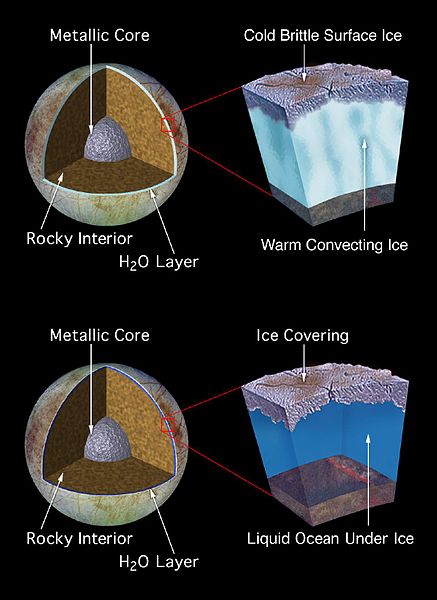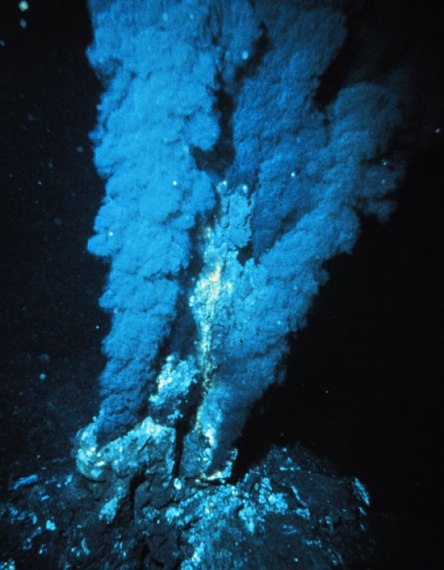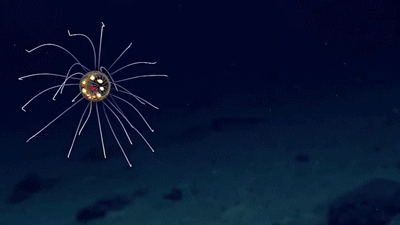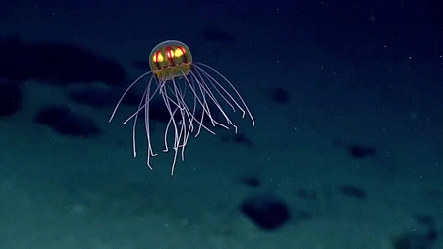
Could there be life beneath the icy surface of one of Jupiter’s moons and what would that look like? How would we know? In the last couple of weeks, NASA has released a new study suggesting that the ocean lurking beneath Europa’s ice crust might look similar to bodies of water here on Earth. This week we will dive into this study and why it could be important for those of us who are holding out hope for life elsewhere in our solar system.
As our knowledge of the cosmos expands, some of the most pervasive questions asked by curious scientists of all ages are, “Do aliens exist?! Is there life elsewhere in the universe?” In order to explore this question, we first need to talk about the ingredients necessary for life. To the best of our knowledge, the recipe for life includes these three things:
- Water
- Energy
- Essential Chemicals
Life on Earth is a special thing. So far, this is the only planet that we know of – that has all three of these necessary components. Earth has liquid water and temperatures capable of keeping it that way, sunlight to provide energy, as well as essential chemicals like oxygen, carbon dioxide, and nitrogen (all that good stuff) that support life.
Here on Earth, we have a lot of all three ingredients, but what about other worlds like Europa, does it have the full recipe? Let’s take a look!

Content Credit: NASA’s Planetary Photojournal/Wikipedia
Water – Scientists have known since the 1990’s that Europa contains more water and ice than the entire planet Earth. Some of the earlier, flyby missions revealed that the moon has a thick, ice surface, which many scientists believe covers a liquid ocean.
But Alexandromeda! Europa is so far away and so cold!
Well, you’re not wrong. Europa is abut 485 million miles away from the sun and its energy. It has an average surface temperature of -260 degrees Fahrenheit, which is super cold. However, there might be something interesting going on under the surface ice of the moon, which brings us to the second ingredient for life…
Energy – As it turns out, scientists have considered it very likely that Europa may have volcanoes and hydrothermal vents! This means that even if the surface of the moon is incredibly cold, there might be places beneath the ice where hot water full of important minerals erupts from the ocean floor. Speaking of those minerals…

Content Credit: NOAA
Essential Chemicals – NASA’s new study suggests that Europa may be able to produce both hydrogen and oxygen in such amounts that would make it possible for life to evolve in those oceans. Both chemicals would come from chemical reactions taking place beneath the ice where minerals from the water react with Europa’s rocky core producing other elements necessary for lifeforms to exist.
So how can we know these things for sure?
Well, we can’t, unless we send a mission there! NASA is currently formulating a plan to explore Europa and study whether this icy moon – which isn’t too far from us compared to other solar systems and exoplanets – might be capable of harboring life. A mission to launch sometime in the 2020’s would perform multiple flybys to determine what else we can learn about Europa from orbit. What’s even more exciting is a project being tested at the California Science Center in Los Angeles. NASA’s Jet Propulsion Lab has tested a device called a Buoyant Rover for Under-Ice Exploration (BRUIE, for short). This BRUIE could theoretically be used to explore the ocean and terrain under the ice!
What kind of things live in cold, dark water?
I’m so glad you asked! Now before I go any further, I must say this:
The following pictures are from Earth.
Since we haven’t been to Europa yet, we have no idea what might live there. But there are some pretty incredible things living right here in our own waters.

Content Credit: NOAA

Content Credit: NOAA
Here you see an unidentified jellyfish that was filmed at a depth of nearly 3,700 meters (just over 12,000 feet) beneath the surface. This creature was found on one of Okeanos’s missions to explore the still mysterious Marianas Trench. The Trench itself is almost 11,000 meters deep (over 6,000 miles) and is home to many species that can only survive in a habitat that is exceptionally dark and cold.
Even the depths of Earth’s oceans require much more exploration. If we continue to find new and fascinating species on our planet, who knows what bizarre life may be lurking beneath the ice of Europa’s surface. We will simply have to wait and see!
For further reading check out NASA’s mission page for Europa here.
For more information on the Okeanos Mission, visit NOAA’s page here.